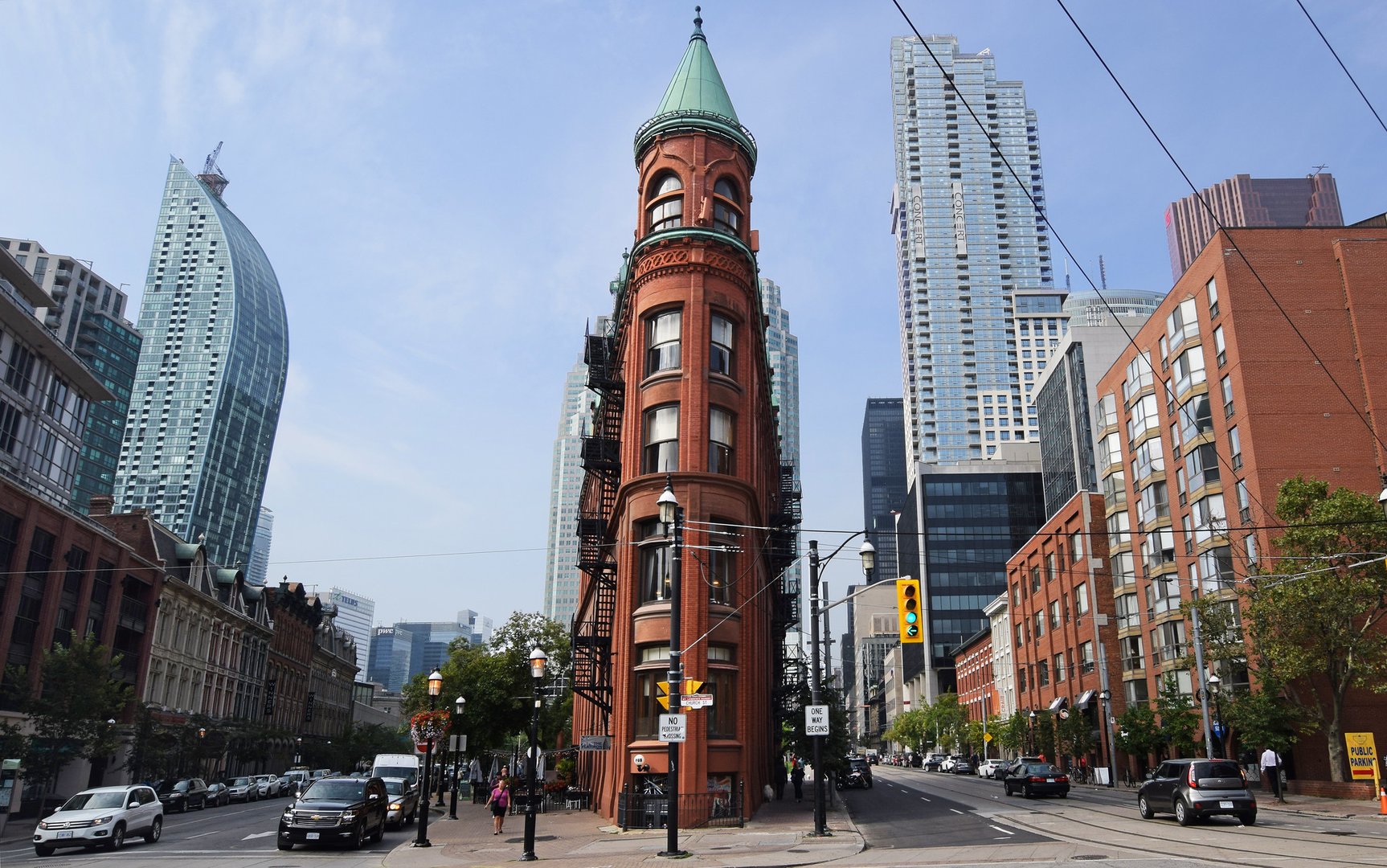Gooderham Building Entrance Fee: Information for Tourists About What to Expect.
Gooderham Building Entrance Fee: Information for Tourists About What to Expect.
Blog Article
Discover the Historical Significance of the Gooderham Building Found in Toronto
The Gooderham Structure, finished in 1892, embodies an abundant tapestry of Toronto's building and commercial history, made by the notable David Roberts Jr. As it stands today, the Gooderham Building continues to play a crucial duty in the city's social landscape, prompting a closer examination of its ongoing impact on both the local economic climate and area identification.
Architectural Layout and Style
Although the Gooderham Building, typically described as the Flatiron Building due to its unique form, showcases an intriguing mix of building styles, it is predominantly characterized by its Romanesque Revival design. This architectural choice reflects the influence of 19th-century trends, emphasizing durable types and intricate describing. The building's three-dimensional exterior functions rounded arcs, heavy stonework, and decorative block patterns, which together produce a sense of monumentality and durability.
The structure's one-of-a-kind triangular profile, which results from its area at the junction of Front and Wellington Streets, better improves its architectural importance. The sharp angles and plunging rooflines add to a vibrant shape that attracts attention versus Toronto's horizon. Additionally, using terra cotta and red brick materials includes warmth and texture to the building, inviting closer assessment and gratitude of its craftsmanship.
Furthermore, the Gooderham Structure's decoration, including cornices and gargoyle-like figures, exhibits the creative flourishes normal of the Romanesque style. This interest to information not just enhances visual charm but additionally serves to share the structure's historic and social significance, strengthening its standing as a cherished architectural spots in Toronto.

Historic History and Building And Construction
The Gooderham Structure's building relevance is deeply rooted in its historic context and building and construction. Finished in 1892, this legendary structure was originally developed as a distillery storehouse for the Gooderham and Worts Distillery, among the biggest distilleries in the globe at the time. The structure was developed during a period of quick industrial growth in Toronto, showing the city's blossoming financial landscape.
Constructed utilizing regional brick and featuring a distinctive flatiron shape, the Gooderham Building stands at the intersection of Front and Wellington Streets, exemplifying the cutting-edge spirit of late 19th-century style. The design, attributed to designer David Roberts Jr., incorporates components of Romanesque and Gothic designs, showcasing detailed detailing and a prominent turret that even more enhances its shape.
The structure's building was marked by the use innovative design techniques for the period, enabling it to rise to 6 tales while accommodating the practical demands of the distillery. Gradually, the Gooderham Building transitioned from commercial use to industrial and retail spaces, yet it stays a vital part of Toronto's building heritage, symbolizing the city's historic development and resilience.

Financial Influence On the Area
Because its completion, the Gooderham Building has actually considerably influenced the regional economic situation, serving as a stimulant for development and advancement in the bordering location (Gooderham Building address). Its legendary design and tactical location in the heart of Toronto have actually attracted countless services and experts, cultivating a setting ripe for entrepreneurship and investment
The structure's special design and historic importance have actually made it a prime focus for tourism, attracting site visitors from around the globe. This influx of visitors has actually promoted regional companies, including restaurants, shops, and cultural locations, thus enhancing the overall economic vigor of the district. Moreover, the visibility of the Gooderham Structure has resulted in increased residential property worths in the area, adding to local profits via real estate tax.

Social Value and Occasions
Beyond its economic contributions, the Gooderham Building holds significant cultural importance in Toronto's landscape. As a significant building gem, it personifies the Victorian Romanesque style, reflecting the city's historic development. The building's famous flatiron form contributes to its standing as a beloved icon of Toronto, attracting both locals and vacationers alike.
The Gooderham Structure works as a lively backdrop for different social events and creative tasks (Gooderham Building address). It frequently holds art events and community events, promoting a feeling of connection among citizens. In addition, its presence improves the character of the St. Lawrence Market area, recognized for its abundant background and vivid community life
Film and photography lovers typically choose the Gooderham Building for its picturesque looks, making it a popular subject in different media. Assisted walking scenic tours regularly highlight the structure's remarkable tales, connecting it to Toronto's broader historical narrative.
In Addition, the Gooderham Structure plays an essential function in commemorating regional culture, with nearby occasions such as the Toronto International Film Festival and the Doors Open Toronto campaign typically featuring it as a vital website of interest (Gooderham Building address). Its long-lasting tradition underscores the value of protecting social sites within a progressing urban setting
Preservation and Restoration Efforts
Among Toronto's dynamic city landscape, preservation and restoration initiatives for the Gooderham Building have actually ended up being essential in keeping its architectural honesty and historic value. Built in 1892, this renowned structure mirrors the distinct Flatiron design, characterized by its special triangular shape and elegant brickwork. Continuous initiatives aim to safeguard its initial features while adjusting to modern needs.
The conservation process entails careful evaluations to guarantee any repair work or improvements recognize the building's historical context. Strategies such as using period-appropriate products and proficient craftsmanship are utilized to preserve the authenticity of the frontage. Collaboration with heritage conservation experts has actually been crucial in developing techniques that straighten with metropolitan standards.
Over the last few years, the Gooderham Building has actually undergone remediation to improve its architectural security while preserving its aesthetic beauty. The establishment of a preservation plan makes certain that future modifications will certainly respect the structure's personality, promoting sustainable usage that honors its past.
These initiatives not only shield an important item of Toronto's building heritage but additionally foster neighborhood interaction by motivating public admiration of this historical site. Eventually, the Gooderham Structure stands as a testament to the city's dedication to preserving its rich history for future generations.
Verdict
The Gooderham Building exhibits considerable building and historical value within Toronto's landscape. As a vibrant commercial space and cultural hub, the Gooderham Structure continues to play a vital role in Toronto's area and tourist.
Please visit one of our local supporters - Https://therepairstore.ca/iphone-repair/
Report this page